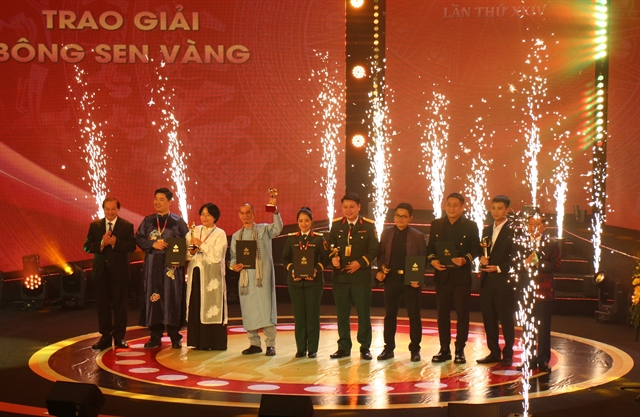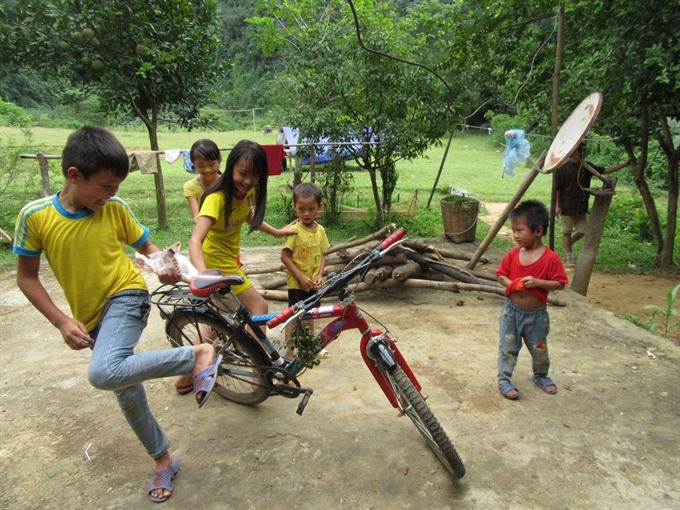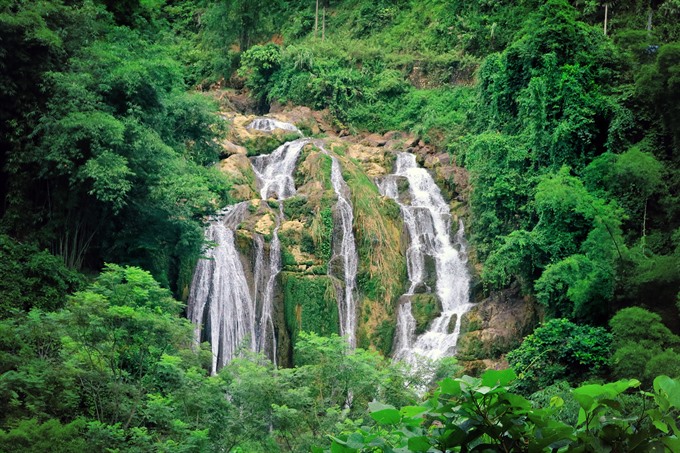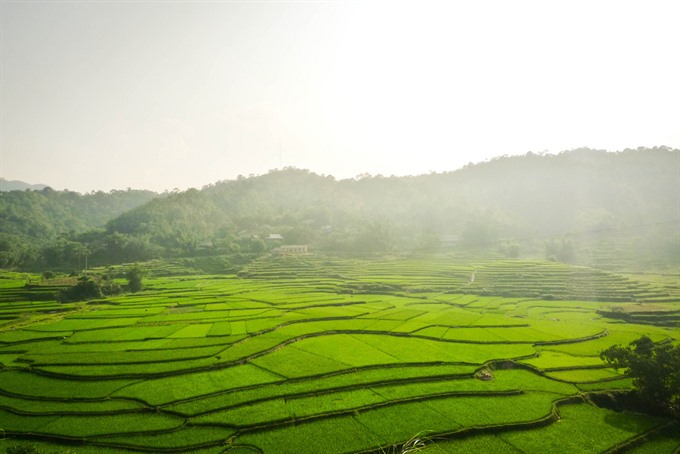 Life & Style
Life & Style
.png)
Various tribes of Muong people live in a lost mountain wonderland that produces healthy people living into their nineties and older..
 |
| Joy: Children play in in Lũng Vân. — VNS Photo Bạch Liên |
by Thanh Nga
Leaving Ngòi Village, a beautiful and pristine village on the banks of Hòa Bình Lake, we were eager to discover Lũng Vân.
We set off on our trip to the northern mountainous Province of Hòa Bình in the early hours of the morning.
Lũng Vân is a highland commune in Tân Lạc District. It is still unaffected by tourism with its spectacular natural scenery and the unique culture of the Mường people.
The destination, some 40km from downtown Hòa Bình City, is located at an altitude of 1,200m above sea level. It is covered with white clouds all year round, which is why it is also called Thung Mây (Cloud Valley).
 |
| Breathtaking: A beautiful site in Lũng Vân. It is said that this place is always covered with clouds from February to April. — VNS Photo Thái Hà |
Lũng Vân is considered “The Roof of Mường Bi”, one of the four major, and the most ancient, cultural cradles of Mường ethnics in Hòa Bình Province, including Mường Bi, Mường Vang, Mường Thàng and Mường Động.
From Ngòi Village, we were lucky enough to take the Ba Khan-Mai Châu Town-Lũng Vân route. It was a wonderful journey.
Ba Khan is located in Mai Châu District and seems to be forgotten. However, this may also work in its favour as it remains unexploited by tourists.
During the itinerary, we had to pass through steep mountains where wattles are used to make the walls of village homes. The road through the mountainside wound alongside the Đà Rriver reservoir. We also saw waterfalls hidden in the bamboo forest and Mường’s houses surrounded by terraced fields.
While basking in these beautiful sights, we reached Lũng Vân, got out of the car and took a deep breath of the pure air.
The place has a spectacular scenery, and is ideal for those who want to escape the city chaos. We discovered that the region is still unfamiliar to many people as it is surrounded by deep blue mountains far away from the main road.
Many of its traditional, cultural and architectural facets are still alive, such as the tortoise-shaped roofs and the Mường women’s dresses, which are black and decorated with colourful patterns.
 |
| Wonderful: Gò Lào Waterfall seen on the way from Ba Khan to Lũng Vân. — VNS Photo Thái Hà |
According to the “Land and Water” epic of the Mường ethnic people in Hòa Bình, Lũng Vân was once a peaceful village, which was then completely destroyed by a devastating flood. No one survived except for a couple who were saved after holding on to a giant tree called Bi. The tree was not swept away as it had deep roots in nine rivers and 10 mountains.
With no place to live, the couple built a tent under the tree and reclaimed new land for farming, tamed wild animals and built containers to store water. They then established a hamlet and named it after the tree to show their gratitude. The present-day Mường Bi is a vast mountainous area of many communes in Tân Lạc District, and Lũng Vân is the highest place where the Mường people live, and is believed to be the area where the Bi tree grew.
This land has many fairytales written about it, and is called the land of longevity because it houses many people more than 100 years old. At the age of 90-100, they still work in gardens and fields. It is believed that the locals’ longevity is due to the water from streams in the region, their good and simple lifestyle and the pure atmosphere.
It was a pity that we visited Lũng Vân in August, when the white clouds were missing. It is said that this place is the most beautiful after Tết, from February to April, because at that time it is covered with clouds. It is also the time the Mường people prepare for a new crop on the terraced fields- “A Giant Mirror of Mường Bi.” From May to July, Lũng Vân has hundreds of streams and waterfalls gushing down from the peak of the mountains, forming an imposing scenery.
The Mường people here are hospitable, friendly and close to nature. “Terraced fields are only cultivated when it rains. We farm using traditional methods so the productivity is not high, but Lũng Vân’s rice is very delicious. In the old days, it was donated to the hamlet lords so it was also called Gạo Chúa Mường (the rice of hamlet lord),” said Hà Văn Bình, a local.
 |
| Stunning: Terraced fields in Lũng Vân are only cultivated when it rains. — Photo youvivu.com |
“The Hòa Bình Province’s leaders have now dedided that Lũng Vân will be a place where eco-tourism will be developed. This is because it lies in the Ngọc Sơn-Ngổ Luông Nature Reserve and is near the Pù Luông Nature Reserve,” said Bùi Thanh Truyền, chairman of the Nam Sơn Commune’s People’s Committee.
“Moreover, near Lũng Vân, there is a large and beautiful cave called Nam Sơn, recognised as a national relic. It was discovered in 2004 by locals. In 2005, the Archaeological Institute of the Ministry of Natural Resources and Environment, carried out an excavation to assess the potential of the cave. Inside they found a lake about seven metres deep, and large and magnificent rocks,” said Truyền.
After speaking to Truyền, we decided to visit Ngọc Sơn-Ngổ Luông Nature Reserve. It was another memorable experience for us as we had another chance to discover a reserve containing a variety of wonderful landscapes and ecosystems. — VNS